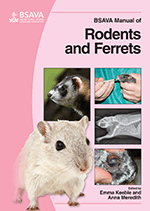
Full text loading...

There is an increasing trend for keeping rodents as pets and correspondingly high client expectation that their pet will receive quality veterinary care. As such it is important for the veterinary surgeon in practice to have up-to-date knowledge when dealing with this mammal group. The aim of this chapter is to outline some of the basic biological, anatomical and physiological features of rodents and give information on their basic housing, nutrition, reproduction and preventative healthcare.
Rodents: biology and husbandry, Page 1 of 1
< Previous page | Next page > /docserver/preview/fulltext/10.22233/9781905319565/9781905319565.1-1.gif

Full text loading...























